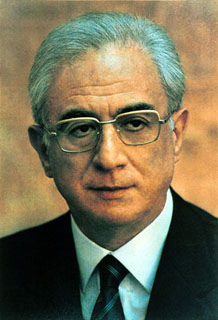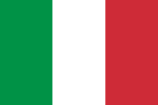Francesco Cossiga
| Senator Francesco Cossiga |
|
 |
|
|
|
|
|---|---|
| In office 3 July 1985 – 28 April 1992 |
|
| Prime Minister | Bettino Craxi Amintore Fanfani Giovanni Goria Ciriaco De Mita Giulio Andreotti |
| Preceded by | Alessandro Pertini |
| Succeeded by | Oscar Luigi Scalfaro |
|
President Emeritus of the Italian Republic
|
|
| In office 28 April 1992 – 17 August 2010 |
|
|
63rd Prime Minister of Italy
|
|
| In office 4 August 1979 – 18 October 1980 |
|
| President | Alessandro Pertini |
| Preceded by | Giulio Andreotti |
| Succeeded by | Arnaldo Forlani |
|
|
|
| In office 12 July 1983 – 3 July 1985 |
|
| Preceded by | Vittorino Colombo |
| Succeeded by | Amintore Fanfani |
|
Italian Minister of the Interior
|
|
| In office 29 July 1976 – 11 May 1978 |
|
| Prime Minister | Giulio Andreotti |
| Preceded by | Aldo Moro |
| Succeeded by | Giulio Andreotti |
|
|
|
| In office 28 April 1992 – 17 August 2010 |
|
| Constituency | Former President |
|
|
|
| Born | 26 July 1928 Sassari, Sardinia, Italy |
| Died | 17 August 2010 (aged 82) Rome, Italy |
| Nationality | Italian |
| Political party | Christian Democracy |
| Spouse(s) | Giuseppa Sigurani |
| Children | Anna Maria Cossiga, Giuseppe Cossiga |
| Religion | Roman Catholicism |
Francesco Cossiga (26 July 1928 – 17 August 2010[1]) was an Italian politician, the 63rd Prime Minister and the eighth President of the Italian Republic. He was also a professor of constitutional law at the University of Sassari.
Contents |
Early career
Cossiga was born in Sassari in the north of Sardinia.[1] He started his political career during World War II. His name is now pronounced Italian pronunciation: [kosˈsiːɡa], but it was originally pronounced [ˈkɔssiɡa], with the stress on the first syllable, meaning "Corsica".[2] He was the cousin of Enrico Berlinguer.[3]
He was a minister several times for the Democrazia Cristiana party (DC), notably during his stay at Viminale (Ministry for internal affairs) where he re-structured the Italian police, civil protection and secret services. In 1977, when Cossiga was minister of internal affairs, police squads organized by Cossiga shot against a demonstration in Rome, killing student Giorgiana Masi. Cossiga for many years stated that she was killed by her companions.[4]
He was in-charge during the kidnapping and murder of Aldo Moro by Red Brigades, and he resigned when Moro was found dead in 1978.[5] According to Italian journalist Enrico Deaglio, Cossiga to justify his lack of action "accused the leaders of CGIL and of the Italian Communist Party to know the location where Moro was detained".[4] Cossiga was also minister of internal affairs when Fascist terrorists bombed Bologna station in 1980. He initially declared that it was a Fascist attack, but he later stated it was a Palestinian transport of weapons which went wrong. He also supported the innocence of Giusva Fioravanti and Francesca Mambro, who were later condemned for the bombing and for numerous murders, declaring: "They are good guys and they want me well."[4]
During the early 1980s, Cossiga attacked several times the antimafia judges and spoke in favour of judge Corrado Carnevale, a member of the Corte di Cassazione (Italy's supreme court) who had annulled numerous sentences against mafia leaders and was later tried for these actions.[4]
Election as the President of the Italian Senate
Cossiga was elected President of the Italian Senate 12 July 1983, a position he held until 24 June 1985, when he became the President of Italy.
Election as President of Italy
Following his resignation as president of the Senate in 1985, Cossiga was elected President of Italy (Head of State). This was the first time a candidate had won following the first ballot (where a majority of over two thirds is necessary).
Cossiga Presidency
It was not until his last two years as President that Cossiga began to express some unusual opinions regarding the Italian political system. He opined that the Italian parties, especially the DC (his own party) and Italian Communist Party, had to take into account the deep changes brought about by the fall of the Berlin Wall and the end of the Cold War.[6]

These statements, soon dubbed "esternazioni", or "mattock blows" (picconate), were considered by many to be inappropriate for a President and, often, beyond his constitutional powers; also, his mental health was doubted and Cossiga had to declare "I am the fake madman who speaks the truth."[6]
Tension developed between Cossiga and the President of the Council of Ministers Giulio Andreotti. This tension emerged when Andreotti revealed the existence of Gladio, a stay-behind organization with the official aim of countering a possible Soviet invasion through sabotage and guerrilla warfare behind enemy lines. Cossiga announced his involvement in the establishment of the organization.[7][8] The Democratic Party of the Left (successor to the Communist Party) started the procedure of impeachment (Presidents of Italy can be impeached only for high treason against the State or for an attempt to overthrow the Constitution).[9][10] Although he threatened to prevent the impeachment procedure by dissolving Parliament, the impeachment request was ultimately dismissed.
Cossiga resigned two months before the end of his term, on 25 April 1992.[11]
Life senator
After his resignation from the office of President, Cossiga was made a lifetime senator, like all the former Presidents of Italy since the birth of the Republic. He was often called President Emeritus of the Italian Republic.
In February 1998, Cossiga created the Unione Democratica per la Repubblica (a political party), declaring it to be politically central. The UDR was a crucial component of the majority that supported the D'Alema government in October 1998, after the fall of the Prodi government which lost a vote of confidence.
Cossiga declared that his support for D'Alema was intended to end the conventional exclusion of the former Communist Party (PCI) leaders from the premiership in Italy.
In 1999 UDR was dissolved and Cossiga returned to his activities as a senator, with competences in the Military Affairs' Commission.[12]
In May 2006 he brought in a bill that would allow the region of South Tyrol to hold a referendum, where the local electorate could decide whether to remain within the Republic of Italy, take independence, become part of Austria or become part of Germany.[13]
On 27 November 2006, he resigned from his position as a lifetime senator. His resignation was, however, rejected on 31 January 2007 by a vote of the Senate.
Cossiga died on 17 August 2010 because of respiratory problems.
Political views
In 2007, in a statement published by the Italian newspaper Corriere della Sera, Cossiga commented on the 11 September attacks and on a video attributed to Osama Bin Laden 2001. He wrote that "all of the democratic circles of America and of Europe, especially those of the Italian centre-left, now know well that the disastrous attack was planned and realized by the American CIA and Mossad with the help of the Zionist world in order to place the blame on Arabic Countries and to persuade the Western powers to intervene in Iraq and Afghanistan".[14][15]
References
- ↑ 1.0 1.1 Page at Senate website (Italian).
- ↑ See http://www.dizionario.rai.it/poplemma.aspx?lid=75285&r=424.
- ↑ (Italian) Corriere della Sera: Mio cugino Berlinguer: Cossiga racconta un leader (Cossiga talking about Enrico Berlinguer in an interview to Gian Antonio Stella - June 10, 2004)
- ↑ 4.0 4.1 4.2 4.3 Deaglio, Enrico (18 August 2010). "La lepre marzolina che attraversò la storia senza pagar dazio". L'Unità.
- ↑ Sassoon, Donald (18 August 2010). "Francesco Cossiga obituary". The Guardian.
- ↑ 6.0 6.1 The Washington Post: Veteran Italian politician Cossiga dies
- ↑ Bloomberg: Francesco Cossiga, Italy's Combative Former President, Dies at Age 82
- ↑ ADN Kronos: Former president Francesco Cossiga dies at 82
- ↑ (Italian) Il Sole 24 ore: Occhetto, lo strappo mai ricucito su Gladio
- ↑ (Italian) La Repubblica: Il PDS vota l'impeachment di Cossiga (Dec 4th, 1991)
- ↑ (Italian) La Repubblica: E l'uomo grigio prese il piccone (Apr. 26th, 1992)
- ↑ (Italian) Cossiga's activity as a Senator, on the Senate's website
- ↑ Cossiga, Francesco (8 June 2006). "Riconoscimento del diritto di autodeterminazione al Land Südtyrol – Provincia Autonoma di Bolzano". Disegno di Legge Costituzionale N. 592. Senato della Repubblica XV Legislatura. http://www.senato.it/service/PDF/PDFServer/BGT/00209688.pdf. Retrieved 21 February 2009.
- ↑ "Osama-Berlusconi? "Trappola giornalistica"". Corriere della Sera. 30 November 2007. http://www.corriere.it/politica/07_novembre_30/osama_berlusconi_cossiga_27f4ccee-9f55-11dc-8807-0003ba99c53b.shtml. Retrieved 5 August 2010.
- ↑ Scherer, Steve; Totaro, Lorenzo (August 17, 2010). "Francesco Cossiga, Italy’s Combative Ex-President, Dies at 82". Bloomberg. http://www.bloomberg.com/news/2010-08-17/francesco-cossiga-italy-s-combative-former-president-dies-at-age-82.html. Retrieved August 20, 2010.
- "Le confessioni di Cossiga: 'Io, Gelli e la massoneria'". La Repubblica. 11 October 2003. http://www.repubblica.it/2003/i/sezioni/politica/gelli/cossiga/cossiga.html. (on links between Cossiga, Licio Gelli and Propaganda Due masonic lodge; Massera, part of Videla's junta in Argentina, is also named)
- Obituary – Fox news
| Political offices | ||
|---|---|---|
| Preceded by Aldo Moro |
Italian Minister of the Interior 1976–1978 |
Succeeded by Giulio Andreotti |
| Preceded by Giulio Andreotti |
Prime Minister of Italy 1979–1980 |
Succeeded by Arnaldo Forlani |
| Preceded by Vittorino Colombo |
President of the Italian Senate 1983–1985 |
Succeeded by Amintore Fanfani |
| Preceded by Sandro Pertini |
President of the Italian Republic 1985–1992 |
Succeeded by Oscar Luigi Scalfaro |
| Preceded by Title jointly held |
President Emeritus of the Italian Republic 1992-2010 |
Succeeded by Title jointly held |
| Italian Senate | ||
| Preceded by Title jointly held |
Senator Legislatures IX 1983–1985 |
Succeeded by Title jointly held |
| Preceded by Title jointly held |
Lifetime Senator Legislatures XI, XII, XIII, XIV, XV, XVI 1992–2010 |
Succeeded by Title jointly held |
| Italian Chamber of Deputies | ||
| Preceded by Title jointly held |
Deputy Legislatures III, IV, V, VI, VII, VIII 1958–1983 |
Succeeded by Title jointly held |
| Honorary titles | ||
| Preceded by Masayoshi Ohira |
Chair of the G8 1980 |
Succeeded by Pierre E. Trudeau |
|
|||||||||||||||||||||||||||||||
|
||||||||||||||||||||

.svg.png)
